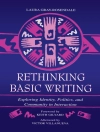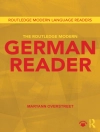Sometimes a student’s best teacher is another student
Just as the pressure for students to perform well on state assessments escalates ever higher, and the call to raise students’ achievement in narrative, opinion/argument , and informative/explanatory writing grows louder, Gretchen Bernabei and Judi Reimer publish Fun-Size Academic Writing for Serious Learning. If ever there were a book to answer every need, this is it.
You see, Gretchen and Judi have been concerned about adolescents’ writing for years, and they have had amazing success using mentor texts by students to teach the ins and outs of writing in any genre. So with this book, they ‘hand over their file drawers’ and provide you with 101 essays written by students with one-page companion lessons that address text structure, imagery, dialogue, rhetorical devices, grammatical structures, textual blends–all the different tools that writers use.
Organized into three major sections that align with the Common Core, STAAR, and other major state assessments, Fun-Size Academic Writing delivers succinct, powerhouse instruction on topics such as:
• How to choose a structure for argument, informational, or narrative writing
• How to read a piece and extract thesis statement and main points
• How to layer a wide range of details to support points
• How to use rhetorical devices and grammatical constructions for effect
• How to write from the point of view of a fictional character
The essays—also available in reproducible form on the companion website–demonstrate something striking, something imitable, something concrete. They give students a bank of choices to call upon as they write. The lessons are short, practical, and full of variety. Collectively, these essays and lessons have the potential to move the needle on American students’ writing achievement once and for all. They show what has been done by students—and they reveal to you how your own students can do it, too.
Зміст
Foreword by Barry Lane
Acknowledgments
Introduction
Part I. Narrative
1. Color It Up
2. Sprinkling Writing With Humor
3. Adding Movement and Sound to Animate a Piece
4. Using Asides
5. Combining Rhetorical Devices: Cataloguing and Repetition
6. Using Literary Characters to Write Fiction
7. Using Specific Language From a Special Setting
8. Using Varied Sentence Openers to Create Rhythm and Flow
9. Using Precise Language to Create Visual Snapshots
10. Using Foreshadowing to Create Mood
11. Building Suspense in a Narrative Through Questions and Answers
12. Using Participles and Participial Phrases
13. Using Variety When Introducing Narrator Thoughts
14. Using Metaphor to Illuminate a Life Lesson
15. Writing Observations
16. Adding Rich Dialogue to a Narrative
17. Writing From the Point of View of a Fictional Character
18. Using Variations of ‘Said’
19. Using Depth and Detail to ‘Explode’ a Moment
20. Showing How a Character Changes
21. Using Introspection in a Memoir
22. Using Onomatopoeia as an Organizational Device
23. Using a Story to Illustrate a Life Lesson
24. Combining Action and Back-Story
25. Showing Conflicting Feelings in a Personal Narrative
26. Fleshing Out a Kernel Essay With Dialogue
27. Showing How a Character Makes an Important Decision
28. Choosing Vivid Verbs
29. Writing Dialogue With Inner Reactions
30. Using Time Transitions: Flash Forward
31. Using Absolutes as Sentence Fragments
32. Using Time Transitions: Flashbacks
33. Withholding and Revealing Information to Build Suspense
34. Using Anadiplosis to Make a Truism Chain
35. Using Enumeratio to Add Detail
36. Layering Thinking and Dialogue
37. Using Transitions to Develop a Conclusion
38. Weaving Together Text From Different Genres
Part II. Informative/Explanatory
39. Sharing Culture Through Special Events
40. Explaining a Historical Context
41. Using Compound Predicates in a Series
42. Analyzing Characters by Writing Letters Between Them
43. Tracking a Changing Thought Process
44. Responding to Literature: Questioning the Author (Part I)
45. Responding to Literature: Questioning the Author (Part II)
46. Conversing With an Imagined Listener
47. Explaining a Concept From the Point of View of a Character
48. Writing About Clues That Reveal a Situation
49. Writing a Letter Using Second-Person Point of View
50. Using Personification to Turn an Abstract Concept Into a Colorful Character
51. Writing a Graphic Book Review
52. Analyzing Literature: Focusing on Character Tension
53. Responding to Literature: Characters Conversing About a Problem
54. Analyzing Literature: Identifying Character Conflicts
55. Analyzing Literature: Noticing an Author′s Choices
56. Recognizing and Illustrating an Important Theme
57. Analyzing the Rhetorical Effects of Poetic Devices
58. Analyzing a Movie
59. Creating an ‘All About’ Essay
60. Giving Writing Vocal Qualities
61. Using Opinions and Facts When Explaining Something New
62. Defining an Important Concept
63. Writing an Epistolary Essay
64. Moving Between Concrete Details and Abstract Ideas
65. Using Quotations to Support a Thesis in a Literary Essay
66. Writing an Extended Apostrophe
67. Multimedia Analysis of a Literary Theme
Part III. Opinion/Argument
68. Using Facts as Evidence
69. Using Formal Versus Informal Language
70. Writing a Script for a Public Service Announcement
71. Examining Quotations
72. Developing Sentence Variety
73. Using Personal Experiences to Support Opinions
74. Using Verbs and Adjectives to Back Up Opinions
75. Making a Claim About a Historical Event
76. Using Sensory Details
77. Using Parentheses
78. Naming and Renaming
79. Using an Innovative Format
80. Using Internal Citations
81. Drawing Editorial Cartoons
82. Knocking Down the Opposition
83. Using Quirky Mental Images in an Argument
84. Using Question and Answer to Frame an Argument
85. Writing a Letter to Raise Awareness About a Social Problem
86. Using Repetition (Anaphora) for Emphasis and Style
87. Keeping an Argument From Sliding Into a Personal Narrative
88. Creating a Poster for Persuasion
89. Using Analogies to Show, Not Tell
90. Anticipating and Overcoming Objections
91. Anticipating a Reader′s Objections
92. Using Hyperbole for Effect
93. Discovering a Problem, Proposing a Solution
94. Weaving Information Into a Persuasive Argument
95. Writing a Descriptive Lead
96. Using Third-Person Examples in an Argument
97. Using Opposites (Antithesis) to Make an Impact
98. Revising an Argument for Length
99. Using the Literary Present Tense to Present an Argument
100. Making Inferences From Pictures
101. Supporting an Argument With Expert Knowledge
Appendixes
Appendix A: 25 Ways to Use Great Student Essays
Appendix B: Text Structures
Appendix C: Lessons by Writing Trait and Level of Difficulty
Про автора
Judi Reimer taught fourth grade in San Antonio, Texas, for seventeen years and continues to advise students and school districts. She has worked as a freelance writer, contributing columns and features for Parents, Ladies’ Home Journal, and other national magazines. Judi has also written articles for Studies Weekly classroom publications and has been a freelance writer for American Legacy Publishing.












